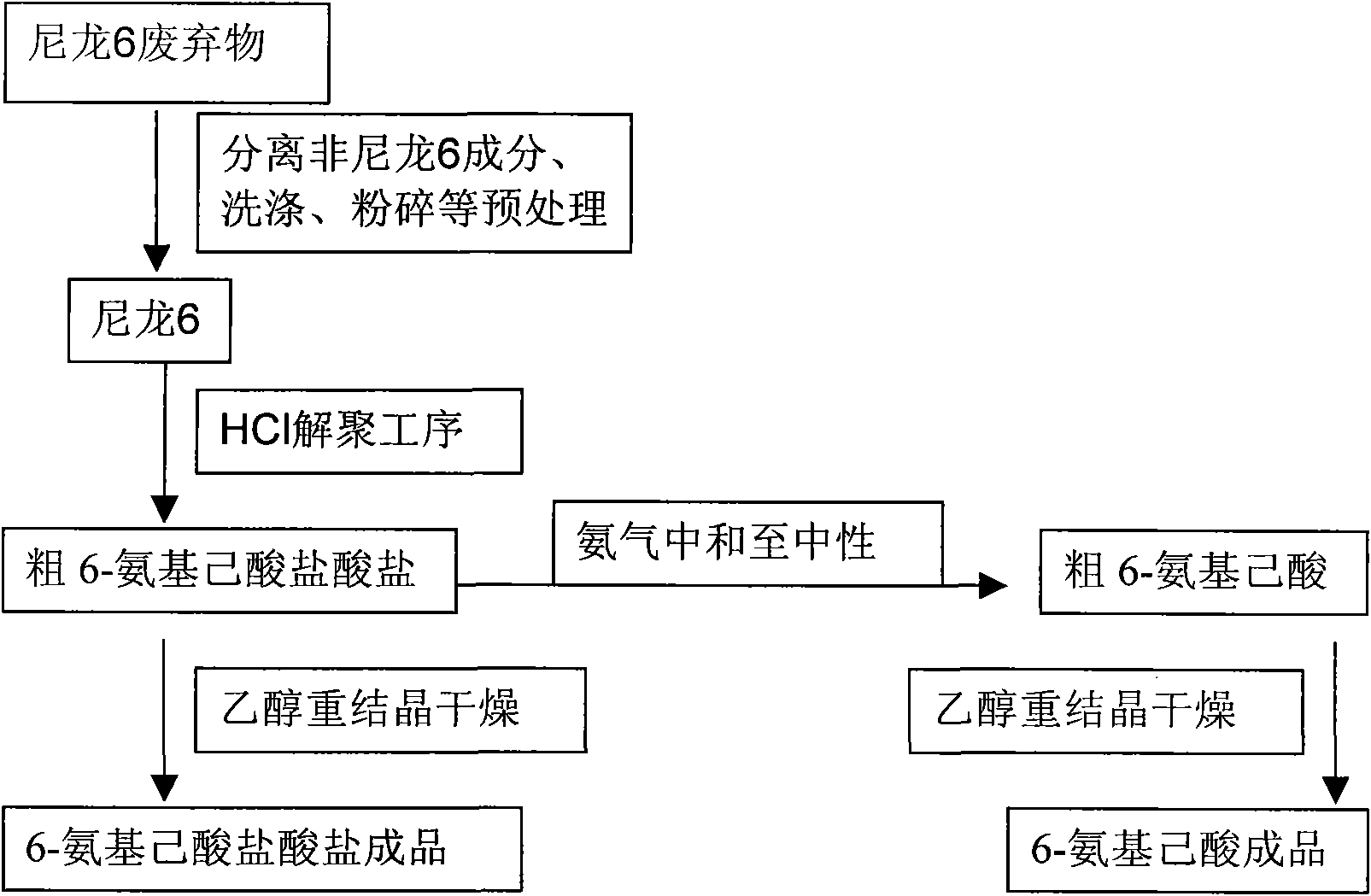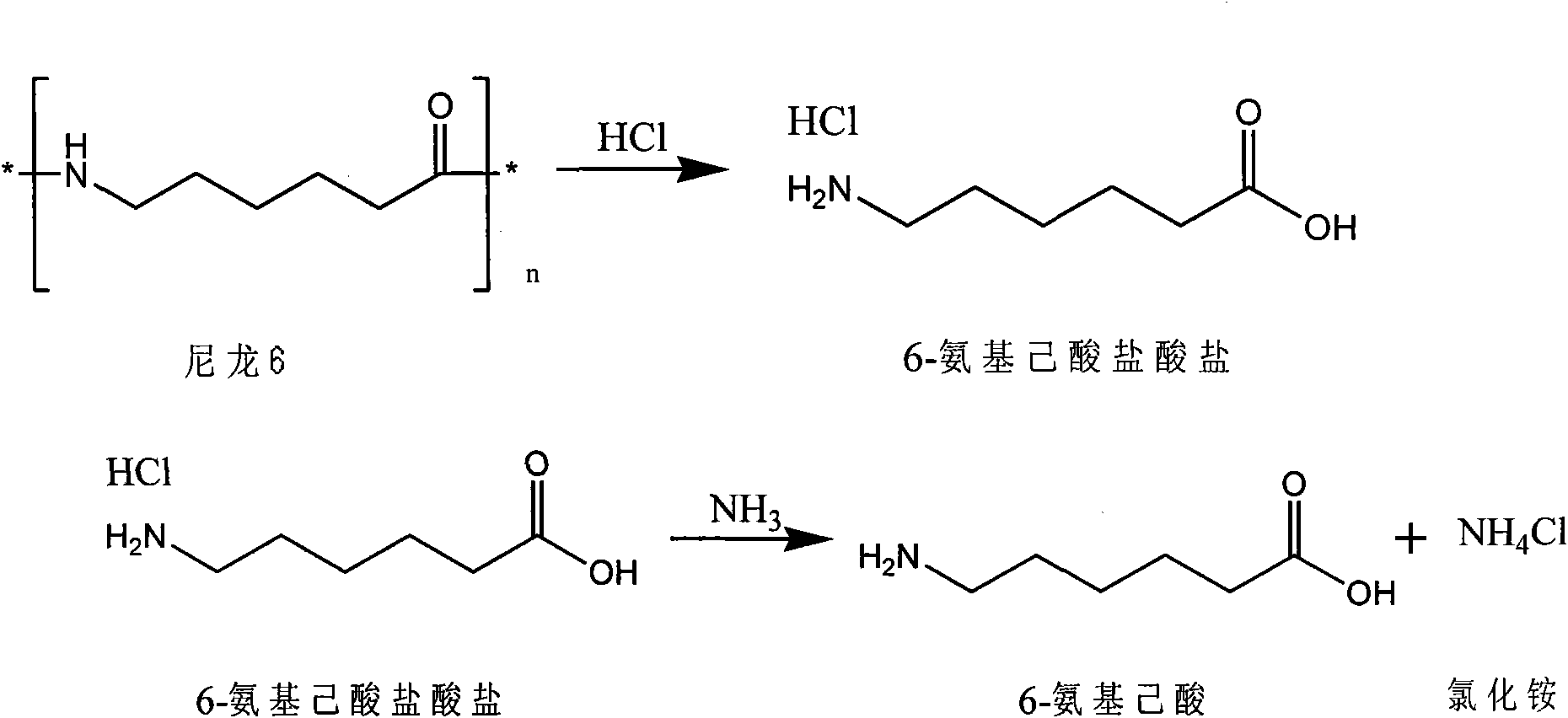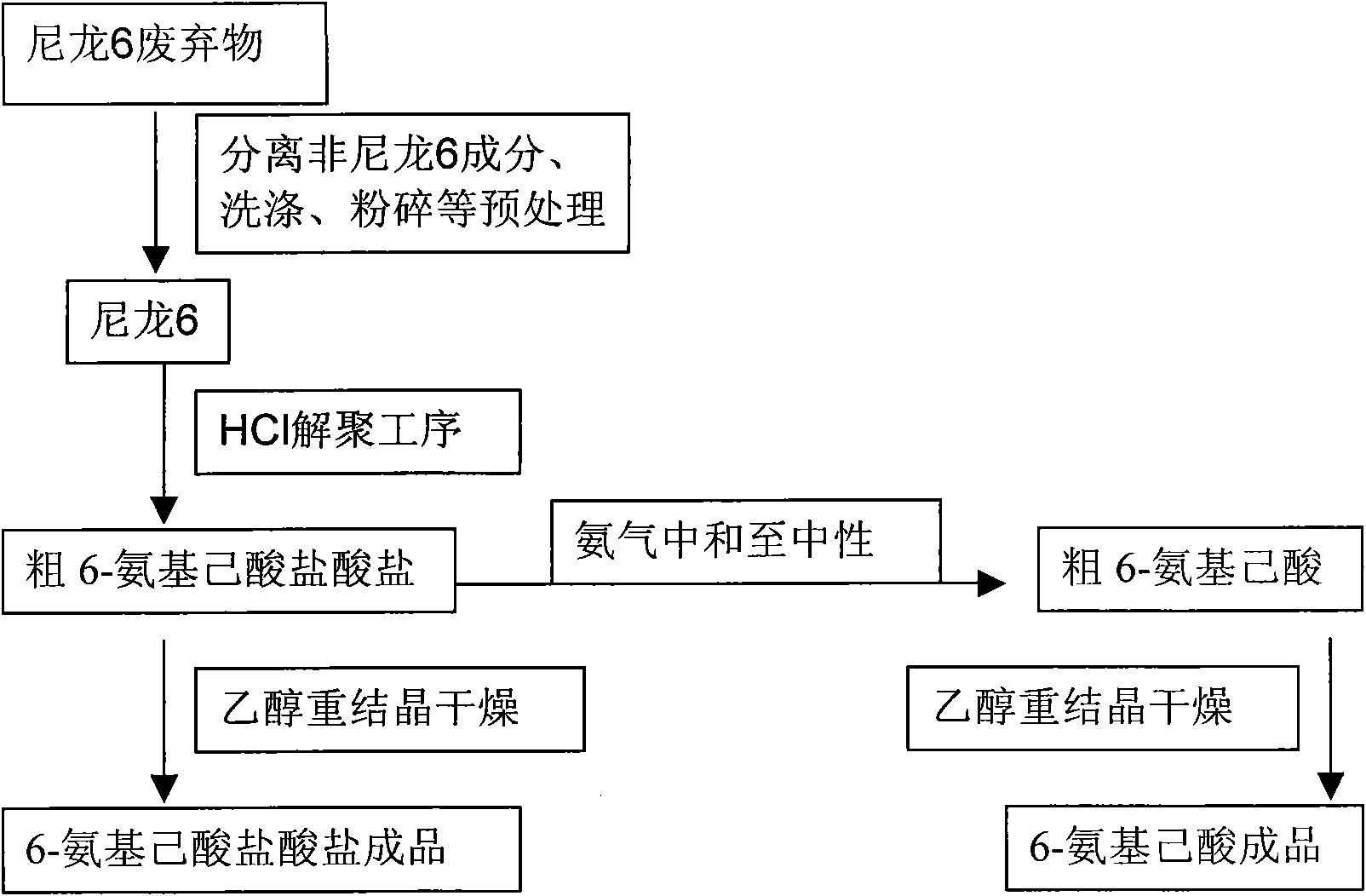Method for producing 6-aminocaproic acid hydrochloride and 6-aminocaproic acid by using nylon-6 waste through depolymerization
A technology of aminocaproic acid hydrochloride and aminocaproic acid, which is applied in chemical instruments and methods, preparation of organic compounds, drug combination, etc., can solve the problems of cumbersome preparation procedures, low product yield, high production cost, etc., and achieve improvement The effect of high purity, high conversion rate, and less by-products
- Summary
- Abstract
- Description
- Claims
- Application Information
AI Technical Summary
Problems solved by technology
Method used
Image
Examples
Embodiment 1
[0026] (1) Add 30% industrial by-product hydrochloric acid of 1000Kg in the enamel reaction still with condensing reflux device and hydrochloric acid absorbing device at the top, add 750Kg water again, add 1000Kg waste material nylon-6 while heating, under normal pressure and 100 React at -110°C for 10 hours to obtain an acidolysis solution;
[0027] (2) Vacuumize the reactor until the absolute pressure is less than 10KPa and maintain it for 30 minutes, cool the acid solution to 35°C, filter to remove the residue, then add 80Kg of activated carbon for decolorization to obtain crude 6-aminocaproic acid hydrochloride solution ;
[0028] (3) The obtained thick 6-aminocaproic acid hydrochloride solution is evaporated under reduced pressure to 30-40% of the total volume, cooled to 30-45° C., and the precipitated thick 6-aminocaproic hydrochloride is filtered and used 2 times the volume of industrial ethanol was recrystallized and dried to obtain refined 6-aminocaproic acid hydroch...
Embodiment 2
[0031] Step (1) (2) is the same as embodiment 1.
[0032] (3) Add commercially available concentrated ammonia water to the thick 6-aminocaproic acid hydrochloride solution obtained in step (2) to neutralize the solution to about pH=7, evaporate and concentrate under reduced pressure to the total volume of the solution after neutralization 20%, add industrial ethanol with 4 times the remaining volume while hot, and after fully stirring, naturally cool to room temperature, filter the precipitated 6-aminocaproic acid, wash and dry with absolute ethanol to obtain refined 6-aminocaproic acid white powder, yield Greater than 90%, purity 98%.
[0033](4) The ethanol filtrate in the step (3) is combined with the ethanol used in the washing step, rectified in a rectification tower, and the cuts at 75-80° C. are collected to obtain a 95% aqueous ethanol solution for recycling. Continue to distill part of the water until the residual liquid in the tower kettle begins to crystallize and ...
PUM
 Login to View More
Login to View More Abstract
Description
Claims
Application Information
 Login to View More
Login to View More - R&D
- Intellectual Property
- Life Sciences
- Materials
- Tech Scout
- Unparalleled Data Quality
- Higher Quality Content
- 60% Fewer Hallucinations
Browse by: Latest US Patents, China's latest patents, Technical Efficacy Thesaurus, Application Domain, Technology Topic, Popular Technical Reports.
© 2025 PatSnap. All rights reserved.Legal|Privacy policy|Modern Slavery Act Transparency Statement|Sitemap|About US| Contact US: help@patsnap.com



